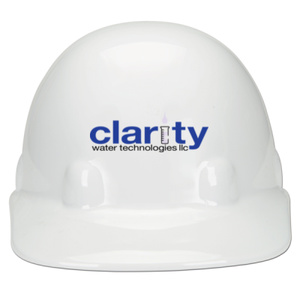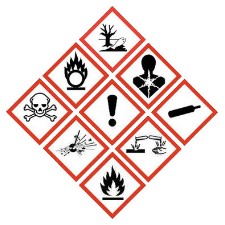In part one of this post, we discuss the rationale for your company adopting some kind of safety protocol. (You can read PART 1 of Proper Safety Saves Lives, Time and Money at the link at the bottom of this post.) Whether it is a safety procedures handbook that becomes part of your new hire package or something that is much more ingrained into your company’s daily culture is up to you and is really dictated by the type of business that you run. The circumstances of your business may not present very many potentially hazardous situations to your staff, in which case, your Safety Procedures could possibly be reviewed at a by-yearly meeting. However, if you run a construction business for instance, you may consider having a Weekly Safety Meeting. In some cases, your insurance company may even require it as a condition of your coverage.
Regardless, once you develop your safety standards, make sure you review them with your staff on a regular basis. Yes, of course you may get some initial belly-aching; however, while your staff may not want to sit through a safety lecture, the repetition could mean the difference between someone’s life and death.
Here are some of the more important aspects of our industrial water treatment safety checklist:
Personal Protective Equipment (PPE)

Industrial Water Treatment Specialists depend on personal protective equipment to protect themselves from hazards and perform daily duties. PPE includes safety glasses, face shields, hard hats, gloves, foot protection, and disposable chemical protective clothing. In some cases, respirators might also be required.
Perform a hazard assessment or a walk-through survey of each work area to determine if there is any risk from impact, penetration, compression (roll-over), chemicals, heat, harmful dust and light (optical) radiation. After the survey, select the proper PPE to suit the hazard.
Eye and Face Protection
Aside from operating the one of the top industrial water treatment companies on the East coast, Clarity also operates the best coil cleaning company in New York City. Our technicians in that division service and clean HVAC equipment like cooling towers, heat exchangers, evaporater and condensor coils and vent and ducts. Eye protection for them is a must. Protective safety glasses, goggles and face shields are required where machines or operations create flying objects, glare, liquids, injurious radiation or a combination of these hazards. Goggles offer the most complete impact protection because they form a seal around eye areas, keeping out dangerous objects. They also prevent tiny dust particles, chemical splashes and vapors from getting in eyes. Check for eye wash stations and check to make sure they are operational.
Hand Protection
Our representatives have been trained to select appropriate hand protection for exposure to hazards such as those from skin absorption of harmful substances, severe cuts or lacerations, severe abrasions, punctures, chemical burns, thermal burns and temperature extremes. When choosing the proper glove, it is necessary to match material with each application or task. This includes assessing the job for chemical exposures, and then selecting the appropriate glove based on material, thickness, length and other traits. In our industry, it is important that our representatives always travel with non-reactive disposable gloves.
Head Protection
All of our Industrial Water Treatment Specialists must wear a protective helmet when working where falling objects could cause head injuries. Every job site has different requirements and daily circumstances going on, therefore, it is a must that we travel with our hard hat at all times. We were going to through the trouble of making an awesome video that used a watermelon to demonstrate the importance of wearing a hard hat (versus a bump cap or nothing at all), but these guys already beat us to it:
Foot Protection
Every member of our team should wear protective footwear in areas where falling objects, rolling objects or objects that might pierce a sole might cause foot injuries, and especially where feet could be exposed to electrical hazards.
Clothing
Chemical resistance and suit design need to be considered when selecting appropriate protective clothing for water treatment. Suits also might be selected for durability or their disposable materials depending on the chemical and its permeation and breakthrough data. While it is rare to require a head-to-toe chemical resistant suit for day-to-day operations, we often use them in cleaning jobs where overspray becomes an issue. When performing a cooling tower cleaning service, for instance, our representatives are equipped with the proper personal protective equipment, including a chemical resistant suit.
Respiratory Protection
Respirators are essential when working in areas where airborne particulate could be present. A system of exhaust is also recommended in indoor areas where there may be issues to keep exposure below the airborne exposure limits. If the exposure limit is exceeded, a half-face or full-face air-purifying respirator with a cartridge can be worn up to 10 times the exposure limit, or to the maximum-use concentration specified by the appropriate regulatory agency or respirator supplier, whichever is lowest.
In our business, it is rare for a self-contained breathing apparatus to be necessary, however, in an emergency situation, it could be appropriate.
Chemical Storage and Handling
Chemicals play an important role in many aspects of wastewater treatment. Minimizing the quantity of stored chemicals such as chlorine can reduce the inherent hazards of chemicals.  However, when chemicals must be retained, proper on-site storage and handling procedures can reduce or eliminate risks. All chemicals should be properly labeled and stored according to information specified on the MSDS (now called Safety Data Sheet or SDS). Keep in mind: The Hazard Communication Standard (HCS) was revised in 2012 to more closely reflect the UN’s Globally Harmonized System of Classification and Labeling of Chemicals (GHS). The new standard requires that the chemical manufacturers, distributors, and importers provide Safety Data Sheets (SDSs) for every hazardous chemical to successive users to convey information on these hazards. Emergency equipment should also be considered when storing or handling chemicals. Emergency equipment includes first aid kits, emergency contact numbers, eye wash stations and emergency shower facilities, fire extinguishers, spill-cleanup supplies and personal protective equipment, all of which should be readily available.
However, when chemicals must be retained, proper on-site storage and handling procedures can reduce or eliminate risks. All chemicals should be properly labeled and stored according to information specified on the MSDS (now called Safety Data Sheet or SDS). Keep in mind: The Hazard Communication Standard (HCS) was revised in 2012 to more closely reflect the UN’s Globally Harmonized System of Classification and Labeling of Chemicals (GHS). The new standard requires that the chemical manufacturers, distributors, and importers provide Safety Data Sheets (SDSs) for every hazardous chemical to successive users to convey information on these hazards. Emergency equipment should also be considered when storing or handling chemicals. Emergency equipment includes first aid kits, emergency contact numbers, eye wash stations and emergency shower facilities, fire extinguishers, spill-cleanup supplies and personal protective equipment, all of which should be readily available.
If you are a facility owner or operator with an HVAC system that requires commercial water treatment, you should also consider one of the safer systems available today, like the EcoSafe Solid Feed System powered by Smart Release.
Having Safety Standards Just Makes GOOD Business Sense
Regardless of the industry that you are in, it makes sense to have safety procedures in place for your staff to follow to keep them safe. Your employees may not be on construction site or handle harmful chemicals, however, that doesn’t mean that there aren’t precautions you can take to ensure their safety. Even if your staff sits in offices all day long, make sure they know what to do in an emergency. Where do they exit the building in the case of a fire? Who do they call if a disgruntled client enters the office and threatens someone? Do you allow your employees to stay in your office after regular business hours? If so, do you let them stay alone? Could they be at risk? Your employees’ safety should always be your number one priority and keeping them safe keeps your business safe as well.
Thank you for reading! We would love to hear your feedback and comments.
Related Articles:


